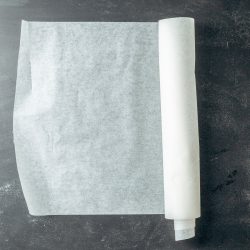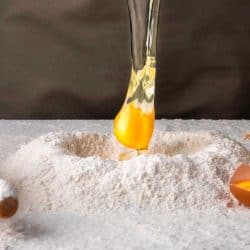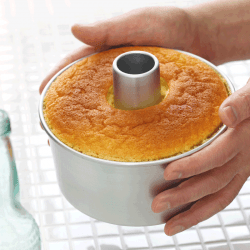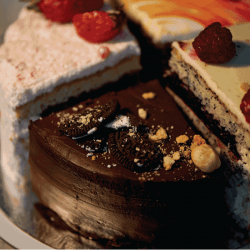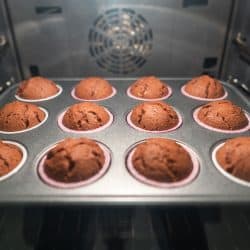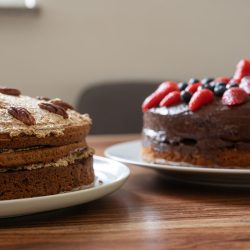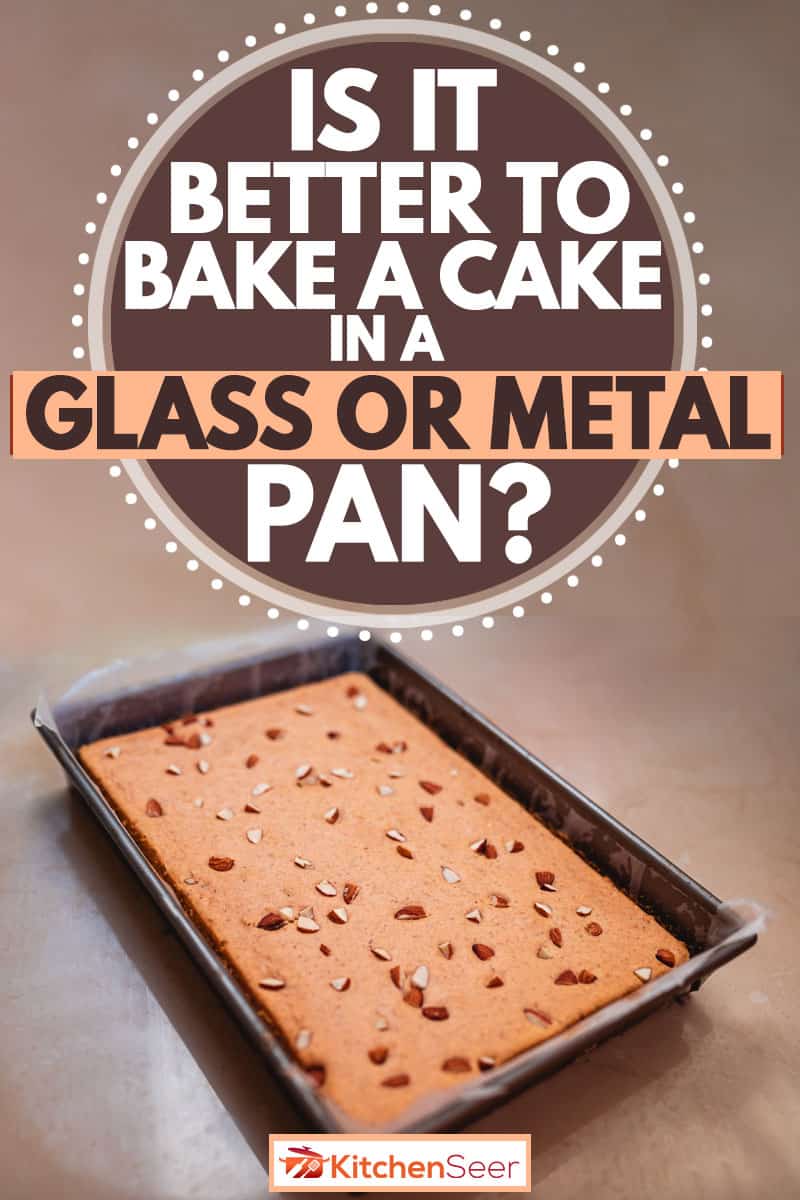 It’s your best friend’s birthday tomorrow, and you’d like to bake them a cake. You pull out all your ingredients and then dig around for a cake pan. You have two options: a metal pan or a glass pan. Which is better, and why? We have scoured the internet to get the best answer to this critical baking question!
It’s your best friend’s birthday tomorrow, and you’d like to bake them a cake. You pull out all your ingredients and then dig around for a cake pan. You have two options: a metal pan or a glass pan. Which is better, and why? We have scoured the internet to get the best answer to this critical baking question!
It’s better to bake a cake in a metal pan over a glass one, especially a lighter-hued aluminum pan. Metal conducts heat faster than glass, reducing baking time. However, once glass does heat up in the oven, it stays hot longer than metal. This means there’s a risk of burning your cake.
In this article, we’ll talk more about the baking times for cakes cooked in a metal versus a glass pan. If you do want to use glass, we’ll also discuss how to grease a glass pan and how to get your cake out when it’s done baking. Keep reading!
How Long Does It Take to Bake a Cake in a Glass Pan?
In the intro, we mentioned that baking in a glass pan takes longer. According to flour brand King Arthur, the glass acts as an insulating material when you put it in the oven. The heat flow that you need to reach your cake from your oven happens much more slowly because of your pan material.
Some bakers advise not baking at the exact temperature your recipe calls for when using a glass pan. You might want to reduce the temperature to at least 25 degrees Fahrenheit lower. Then, you’d still bake the cake for the same amount of time, so roughly 25 to 35 minutes (or more) depending on your recipe.
Remember that glass holds onto heat, even when immediately taken out of the oven. This puts your baked goods at risk of burning if you leave them in the oven for too long, so be diligent and always use an oven timer.
Also, when testing your cake for doneness, make sure to stick a toothpick towards the center of the cake, not the edges. King Arthur mentions that when baking brownies in a glass pan, a phenomenon occurs where the edges overbake before the middle is finished. This may or may not happen with your cake, but it’s good to be aware of anyway.
Are you thinking of upgrading to a double oven for baking cakes? You won’t want to miss our post: How Much Does a Double Oven Cost?
How Long Does It Take to Bake a Cake in a Metal Pan?
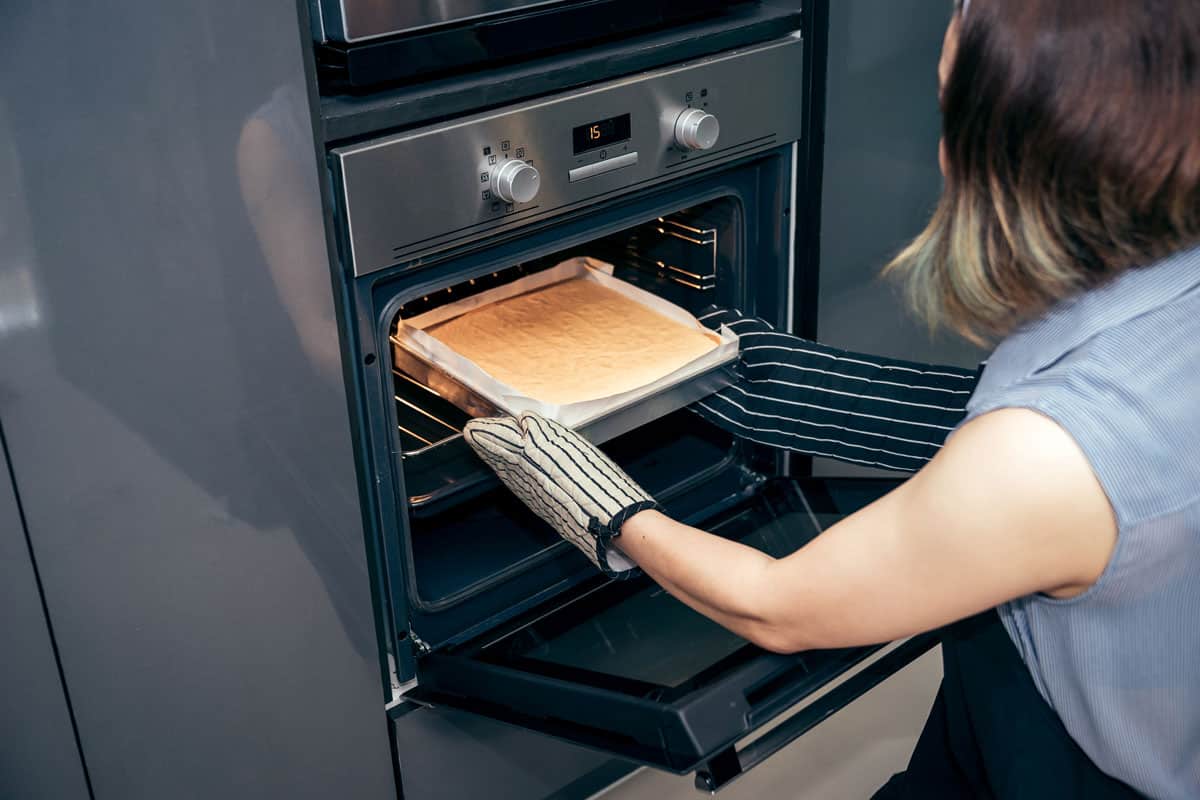 The way metal behaves in the oven depends on the type of metal used and the color. Darker-colored metal pans cook very quickly because of speedy heat distribution. Unlike glass pans, this heat distribution occurs in equal amounts across the entirety of what’s in the pan. This leads to uniform baking, at least in most cases. Sometimes, you end up with darker cake edges than you would in a lighter metal pan.
The way metal behaves in the oven depends on the type of metal used and the color. Darker-colored metal pans cook very quickly because of speedy heat distribution. Unlike glass pans, this heat distribution occurs in equal amounts across the entirety of what’s in the pan. This leads to uniform baking, at least in most cases. Sometimes, you end up with darker cake edges than you would in a lighter metal pan.
Like with a glass pan, take whatever the recommended temperature is in your recipe and then turn your oven down 25 degrees cooler when baking in a dark metal pan. Also, check on your cake early and often. For example, if you should bake the cake for 35 minutes, then peek in on it at 25 minutes or sooner to prevent burning.
If you’re using a light-colored metal pan, such as aluminum, you don’t have to worry about overly quick baking. The lighter hue of the metal conducts heat optimally. Whatever baking time your recipe calls for, be it 25 or even 40 minutes, your cake should be safe to bake that long without any need to reduce the temperature.
Do you only have a springform cake tin for baking? Read this: Do You Need To Line A Springform Cake Tin?
How Do You Grease a Glass Pan?
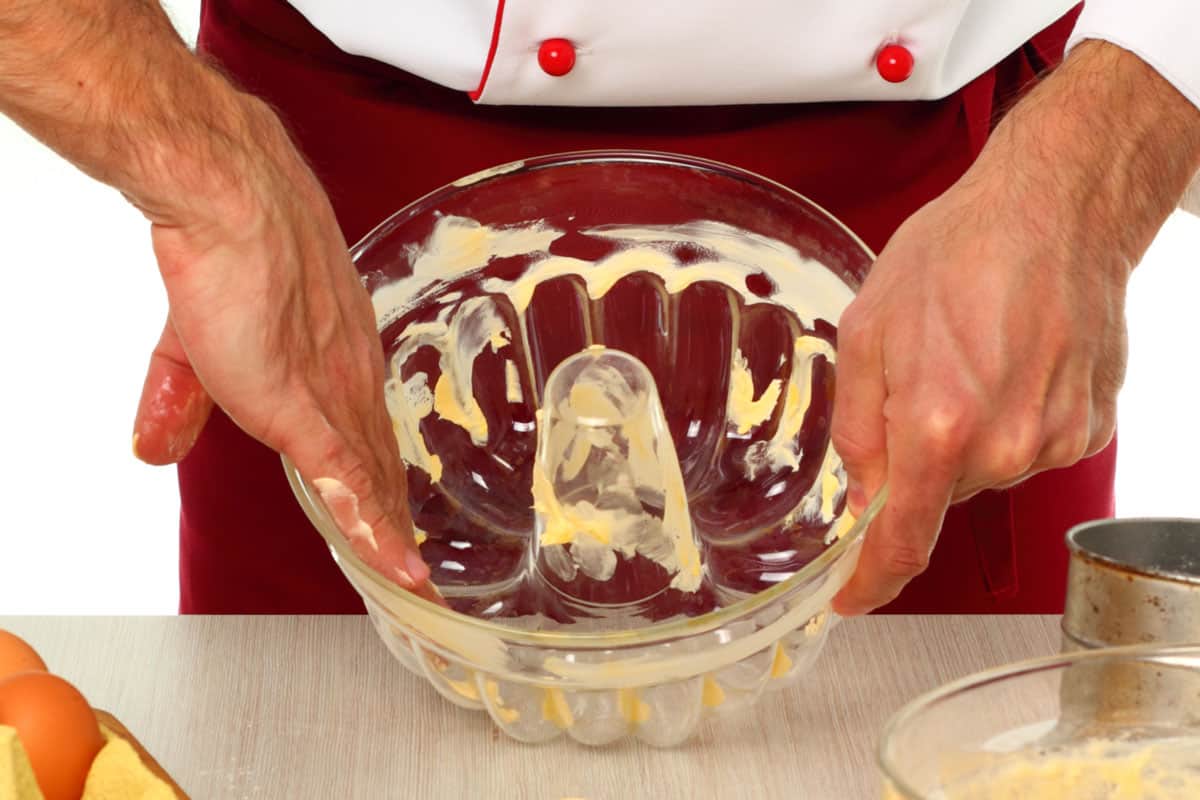 You know that metal is the most optimal material for baking, but a glass pan is all you have. Thus, you want to make the most of it.
You know that metal is the most optimal material for baking, but a glass pan is all you have. Thus, you want to make the most of it.
To ensure your cake or other baked creations come out of the glass pan, you must grease it up. You have plenty of greasing options you can use, so let’s discuss these now.
Baking Spray
A classic for a reason, baking spray is convenient to use. One of the most popular baking spray brands is PAM. If you use baking spray on a glass pan, make sure you coat the entire surface of the baking pan evenly, including the corners. This will prevent your cake from sticking in the glass pan, which can cause you headaches when you want to take it out later (keep reading for how to do this!).
Parchment Paper
Okay, so parchment paper isn’t a means of greasing your glass pan, that’s true. It is something bakers swear by when making cakes and other goodies, though.
In case you’re not familiar, parchment paper is a type of release paper made of cellulose that never sticks. You can rely on it to make cookies, cakes, and other desserts. To use parchment paper on your cake, use a pencil to trace the shape of your cake onto the paper. Then cut the parchment paper into the right shape, line your baking pan with it, and pour your ingredients right in.
Vegetable Oil
No PAM? No problem! Vegetable oil is a chief ingredient in a lot of baking sprays, so you can use it on its own if that’s all you have. Rather than pour the oil directly into the pan, apply some on a paper towel and then coat the pan that way.
Butter
Butter has fatty cells within it that act as an adequate greaser when cooking or baking since the butter prevents cakes and other treats from sticking.
You don’t have to melt your butter down if you don’t have time. By grabbing a stick of butter from your fridge and rubbing it over your glass pan, you can grease it that way. Just make sure you use unsalted butter, or your cake may have a somewhat savory flavor.
Shortening
Since shortening has vegetable oil in the ingredients, it’s another alternative you can use when that container of PAM is empty. Use it the same way you would butter to make your glass baking pan non-stick.
Flour
Here’s a baking hack you might not be familiar with: for glass pans especially, coat the surface of the pan in flour. Your cake won’t stick to the flour, so it comes out super easily.
A touch of flour is all you need here. Avoid large clumps of the stuff, as they could stick to your cake and influence its taste.
Bacon Fat
Speaking of taste, bacon fat should be saved as a last resort because its flavor will permeate through your cake. Maybe that’s not such a bad thing to you, in which case, use bacon fat as a greaser all you want.
How Do You Get a Cake out of a Glass Pan?
Okay, you baked your cake in a glass pan, and it came out pretty good! You were very diligent about watching your oven, so the cake didn’t burn.
Now you want to take the cake out so you can put frosting on it. How do you get it out of the glass pan?
Well, before you attempt to, make sure you give the cake a while to cool. Since glass pans can stay hot even out of the oven, wait for 30 to 45 minutes before you even handle the cake. If it feels warm to the touch even after that time, give it another 10 or 15 minutes.
If you used parchment paper, you should be able to pull the ends of the paper on either side of your glass pan and lift the cake right out. For other greasing options like vegetable oil, PAM, or butter, it might take a bit of elbow grease to release the cake from the pan.
With an offset spatula or butter knife, go around the rim of the cake and run the utensil around the perimeter. Be careful not to use a utensil with a pointy or serrated edge, as that could scratch the glass. When you’ve loosened the sides of the cake out, tip the pan straight up or even upside down, patting the back, so the cake comes out. Be ready to hold the cake with your other hand and then get it upright on a cake board.
Conclusion
If you have the choice between using a glass or metal pan for baking a cake, it’s always better to choose metal, and light-colored aluminum at that. This metal distributes heat well, letting you follow your recipes to the letter.
If you only have darker-colored metal or glass pans, then make sure you reduce your oven temperature by 25 degrees and check the cake often. Both types of pan materials are prone to burning. Best of luck with your baking!

